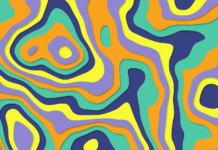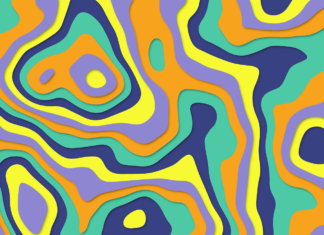Ant Design is a widely acclaimed design system and React UI library developed by the Alibaba Group’s Ant Financial Services, now known as Ant Group. It provides a comprehensive set of ready-to-use components, design principles, and guidelines for building efficient and visually appealing user interfaces. Ant Design has gained immense popularity among developers due to its well-crafted components, powerful customization options, and extensive documentation.
At its core, Ant Design aims to facilitate the development of high-quality, consistent, and responsive user interfaces. It is built upon the principles of simplicity, efficiency, and usability. With Ant Design, developers can easily create professional-looking interfaces that are not only visually appealing but also intuitive for end-users.
One of the key strengths of Ant Design is its extensive collection of reusable components. These components cover a wide range of UI elements, including buttons, forms, navigation menus, tables, modals, and more. Each component is meticulously designed to meet the highest standards of usability and accessibility. Developers can seamlessly integrate these components into their applications and customize them to suit their specific needs.
Ant Design provides a rich set of features and functionalities that make it an ideal choice for both small-scale projects and large-scale enterprise applications. It offers a responsive layout system, which allows developers to build interfaces that adapt to different screen sizes and devices. This responsiveness ensures that the application remains user-friendly and visually appealing across various platforms, including desktops, tablets, and mobile devices.
In addition to the comprehensive component library, Ant Design also offers a powerful theming mechanism. Developers can easily customize the look and feel of their applications by modifying the predefined theme variables provided by Ant Design. This flexibility enables developers to create visually cohesive designs that align with their brand identity or project requirements.
Ant Design’s documentation is another notable aspect of the library. It provides clear and detailed explanations of each component, along with code examples and usage guidelines. The documentation is regularly updated and maintained by the Ant Design team, ensuring that developers have access to the latest information and best practices. Furthermore, the documentation also includes design principles and guidelines, which serve as a valuable resource for developers who want to understand the underlying design philosophy and make informed design decisions.
Apart from its feature-rich library and comprehensive documentation, Ant Design also benefits from a vibrant and active community. The community actively contributes to the project by reporting issues, suggesting improvements, and creating additional resources, such as tutorials and plugins. This collaborative spirit fosters a supportive environment where developers can seek assistance, share knowledge, and stay updated with the latest trends in UI development.
Ant Design has gained widespread adoption in various industries and sectors. It is particularly popular in the field of web development, where React is widely used. Many organizations, ranging from startups to Fortune 500 companies, have embraced Ant Design to streamline their UI development process and deliver visually appealing and user-friendly applications.
Ant Design is a powerful and versatile design system and React UI library that empowers developers to create high-quality user interfaces. With its extensive collection of components, robust theming mechanism, detailed documentation, and active community, Ant Design has established itself as a go-to choice for developers seeking efficient and visually appealing UI solutions. Whether you are working on a small personal project or a large-scale enterprise application, Ant Design provides the tools and resources needed to build exceptional user experiences.
Ant Design’s success can be attributed to its emphasis on user experience and design consistency. The library follows a set of design principles known as “Ant Design’s Design Values,” which include clarity, efficiency, and consistency. These values guide the development process and ensure that the components are intuitive, performant, and visually harmonious.
When using Ant Design, developers can leverage its modular architecture to easily import and use specific components in their projects. This modularity not only improves code maintainability but also allows for efficient development by reusing existing components instead of reinventing the wheel. The components are highly customizable, allowing developers to tailor them to match their project’s unique requirements. This level of flexibility, combined with a wide range of available components, empowers developers to create custom interfaces without sacrificing usability or design coherence.
Ant Design also pays close attention to accessibility, making it a suitable choice for projects that prioritize inclusive design. The components are designed with accessibility guidelines in mind, ensuring that they can be used by a diverse user base, including those with disabilities. By adhering to accessibility best practices, Ant Design helps developers build interfaces that are usable and enjoyable for all users.
Another notable feature of Ant Design is its internationalization (i18n) support. As the library caters to a global audience, it provides comprehensive localization capabilities. Developers can easily translate the interface elements, such as text strings and dates, into different languages and adapt them to regional preferences. This feature is especially useful for projects with multilingual requirements or those targeting international markets.
Ant Design’s ecosystem extends beyond its core library. It offers additional tools, such as a command-line interface (CLI), design resources, and a design prototyping tool called “Ant Design Pro” that helps streamline the entire design and development workflow. These tools enhance productivity and enable developers to create cohesive, well-designed applications efficiently.
Ant Design’s impact reaches beyond the React ecosystem. It has inspired the development of similar design systems and UI libraries in other frameworks, such as Vue and Angular. The principles and practices introduced by Ant Design have influenced the broader UI development community, fostering a culture of thoughtful design and usability.
Looking ahead, Ant Design continues to evolve and adapt to the changing needs of developers and designers. The development team actively listens to user feedback and iterates on the library to address emerging trends and requirements. This commitment to continuous improvement ensures that Ant Design remains a cutting-edge and future-proof solution for building modern user interfaces.
In conclusion, Ant Design is a comprehensive and highly regarded design system and React UI library. Its collection of well-designed and customizable components, coupled with its theming capabilities and extensive documentation, make it a powerful tool for developers. With a focus on user experience, accessibility, and design consistency, Ant Design empowers developers to create visually appealing and efficient user interfaces. As the library continues to evolve, it will undoubtedly play a significant role in shaping the future of UI development.






















